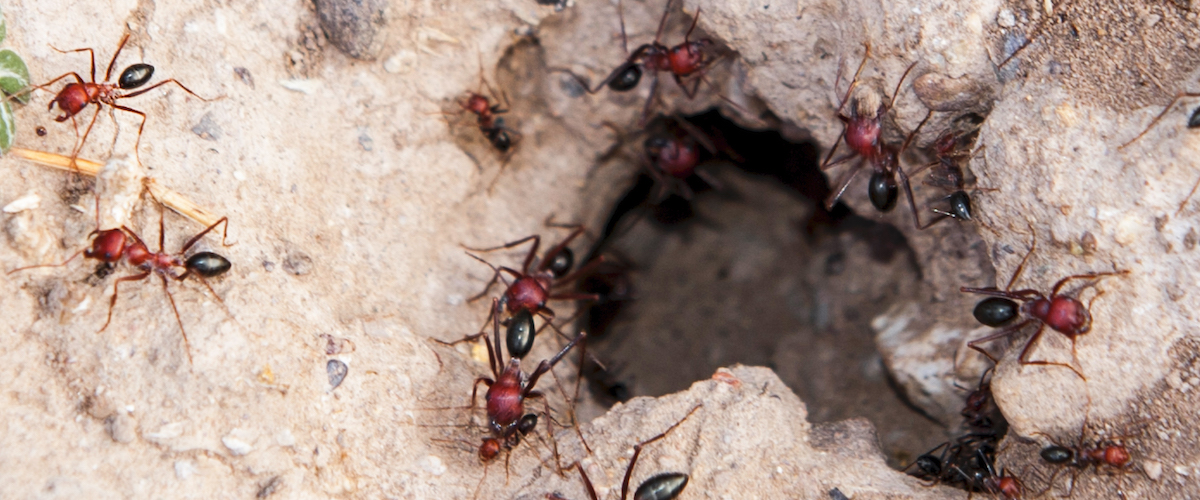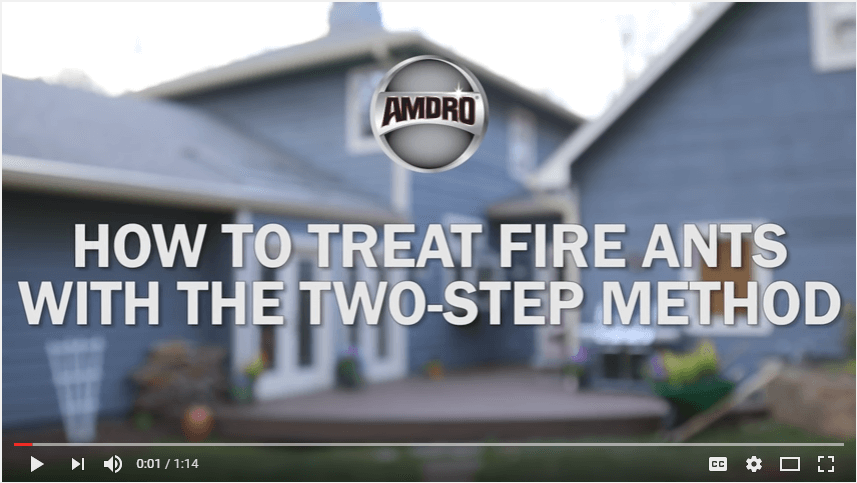Hurricanes, Floods and Floating Fire Ants
When Hurricane Harvey hit the United States in late summer 2017, historic rainfall inundated Texans with flooding. The devastation caused by these events left residents struggling to manage floodwaters and carry out massive cleanups, but many workers faced an unexpected hazard. In Houston and in other areas, massive "rafts" of floating fire ants added to the turmoil.1
Fire ants are known for their resilience, but the methods they use to survive and relocate during floods often take people by surprise. Understanding fire ant flood secrets can prepare you for when hurricanes or flooding send floating fire ants your way.
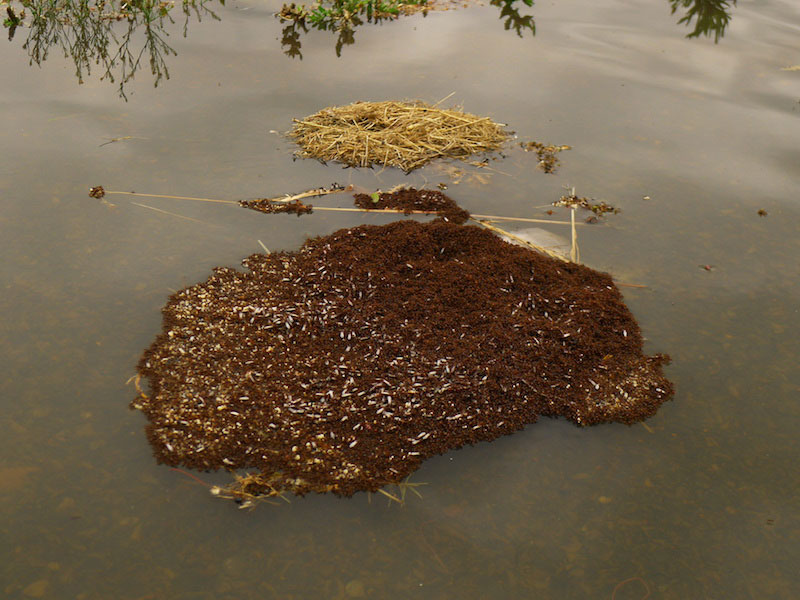
Entire fire ant colonies, including eggs and queens, float.
FIRE ANTS AND FLOOD SURVIVAL
Fire ants are social insects that live together in vast underground colonies that can number in the hundreds of thousands. While other underground insects may drown during severe flooding, fire ants have well-developed mechanisms that help ensure their survival. When flooding strikes, worker fire ants seek high ground and begin forming rafts through an instinctive linking of their legs — the fire ant version of holding hands. Ants that find themselves below water ride air bubbles to the surface and join the raft, which launches as floodwaters rise.
Floating is possible in part because of the waxy body covering and small, bubble-holding hairs that help keep fire ants "waterproof." Even so, the ants still need oxygen, so workers frequently trade places as they float. Ants in the water on the raft's bottom come to the top for rest and rejuvenation while others take their place below. All life stages of the fire ant colony, from queens to eggs, form these living rafts. Worker ants carefully protect queens in the middle and may carry eggs in their mouths. While some rafts and floating ribbons of these hazardous pests sink within hours if they don't find land, others can survive up to 12 days afloat.2
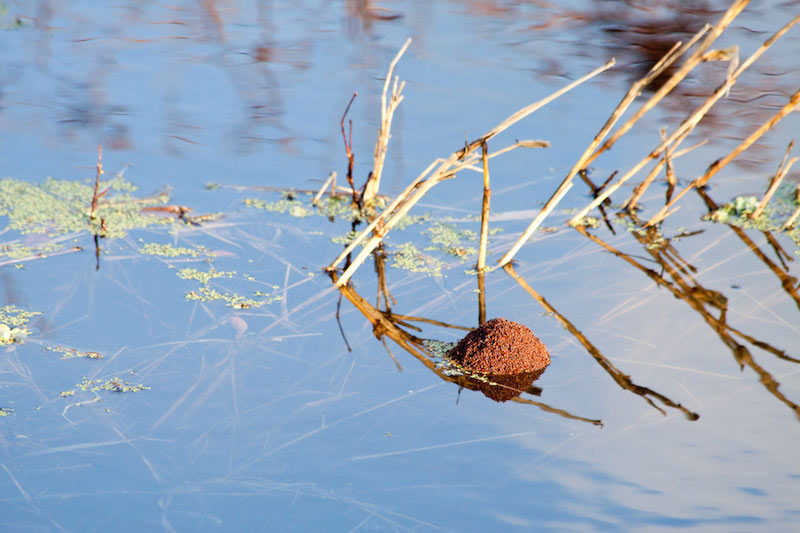
Fire ants may float in small mounds or large groupings.
PROTECTION AGAINST FLOATING FIRE ANTS
Floating fire ant colonies swarm the first "landfall" they find — whether that's a river bank or a wading human. Avoiding these floating colonies is critical to the safety of your family, including your pets. Once on board a human or animal, fire ants will cling to stay free of water, and their fiery, burning stings come next.
When flooding sending fire ants sailing, follow these safety tips:
- Avoid all direct contact with floating fire ants, even with a boat oar or a pole. Fire ants swarm faster than you can pull an oar away.
- Wear cuffed gloves, rubber boats, long sleeves and long pants during cleanup in water or on land. Limit exposed, stingable skin as much as possible.
- Be cautious cleaning up flood-soaked lands. Fire ants may seek temporary shelter under flood debris until waters subside and new colonies form.
- Dust the handles of shovels and other tools with talcum powder to prevent ants from climbing up them as you work.
- When returning to flooded homes or buildings, be on guard for fire ants that have taken refuge inside
Pesticides used to control fire ants in their underground colonies during dry weather should not be used in water. Don't attempt to use these products on floating ants or you may create extra hazards for yourself and flood cleanup crews. However, research shows that a spray of 2 fluid ounces of biodegradable dishwashing liquid mixed with 1 gallon of water may help.3 This fire ant home remedy won't control ants on dry land, but it can break down their waxy protection enough to cause floating ants to drown.
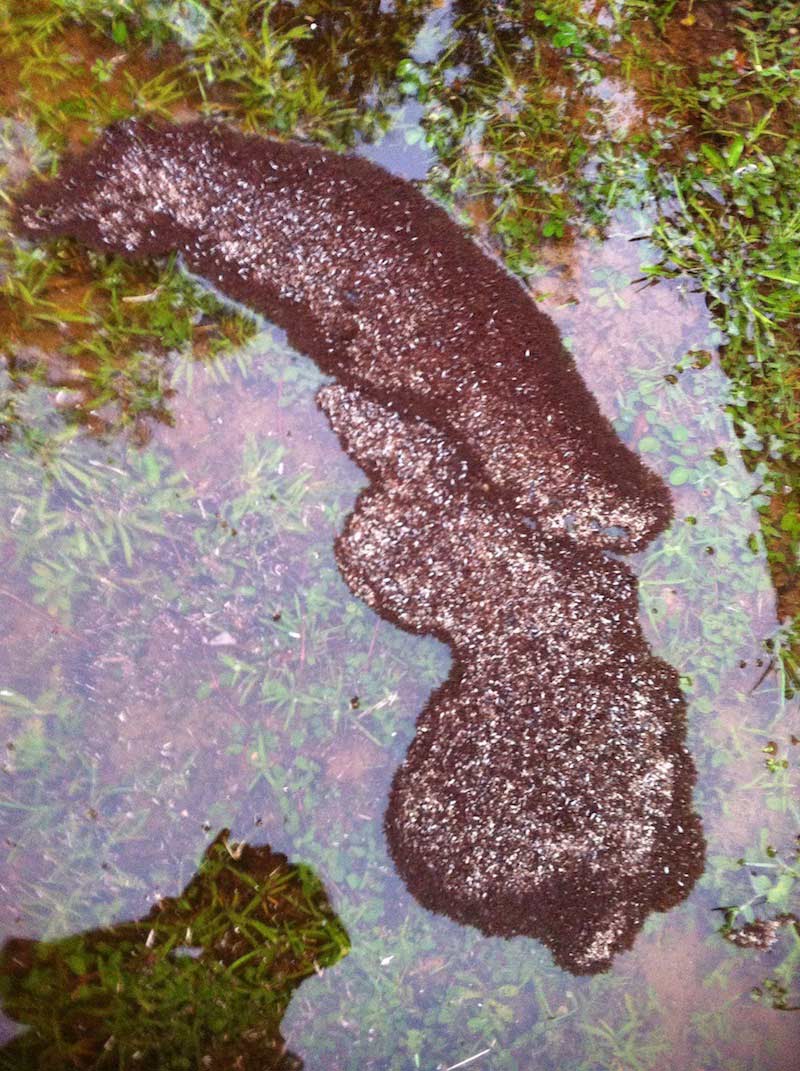
Fire ant rafts may be several long and wide.
PREVENTION BEFORE FLOODS OCCUR
When you live in fire ant country, effective fire ant control before hurricanes and flooding hit kill these hazardous pests so rafts and relocations don't occur. The Two-Step Method of fire ant control combines full-yard bait treatment, such as Amdro® Fire Ant Killer for Lawns granules, with deep-reaching mound treatments, such as Amdro® Fire Ant Killer for Mounds granules.
These products kill fire ants you see and those you don't, including the queen and the colony underground. This highly effective, expert-recommended two-step approach helps protect your family year-round and prevent fire ant dangers in the wake of hurricanes and other significant weather events.
With the help of the Amdro® family of premium pest controls and timely, expert advice from the Amdro® Knowledge Center, you can be prepared to prevent and protect against pest threats and disruptions, including the unexpected arrival of floating fire ant rafts during floods.
Always read product labels thoroughly and follow instructions.
Amdro is a registered trademark of Central Garden & Pet Company.
Sources:
1. M. Merchant, “Fire Ants Make Water Rescue … Interesting," Texas A&M AgriLife Extension, August 2017.
2. P.R. Nester, “What Happens to Fire Ants During a Flood," eXtension.org, November 2016.
3. P. R. Nester, “Protect Yourself and Your Family From Fire Ants in a Flood," eXtension.org, November 2106.


